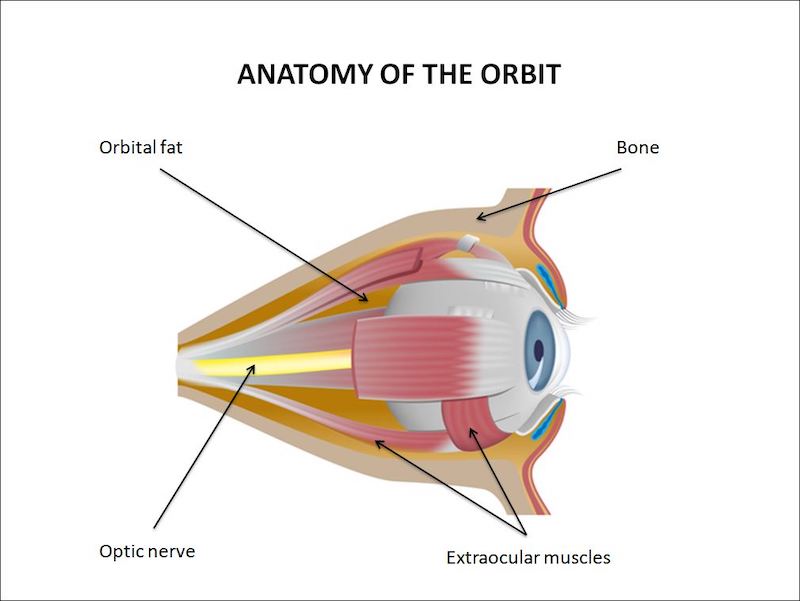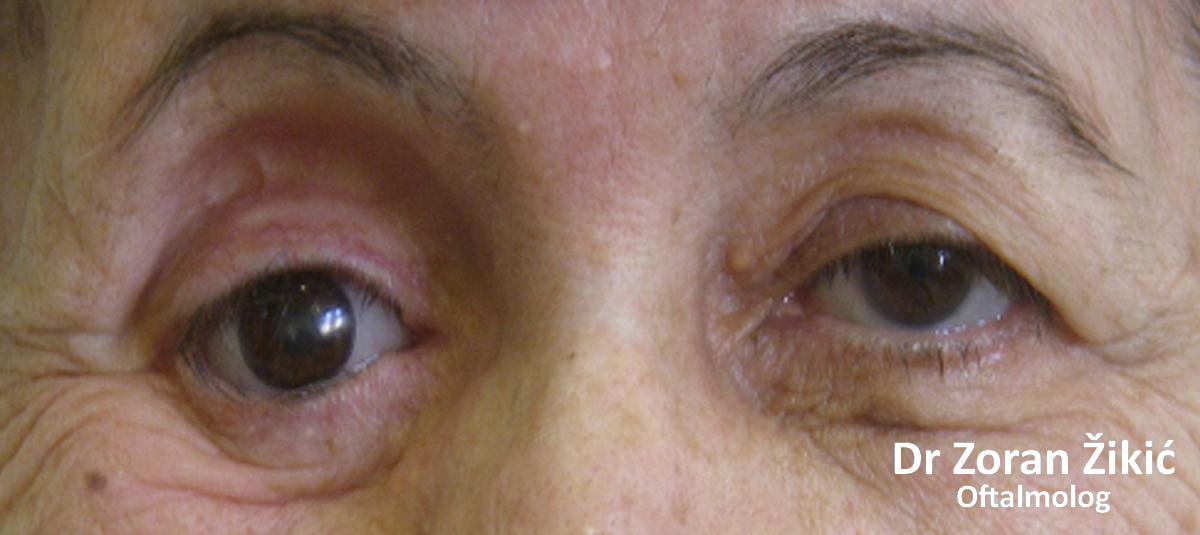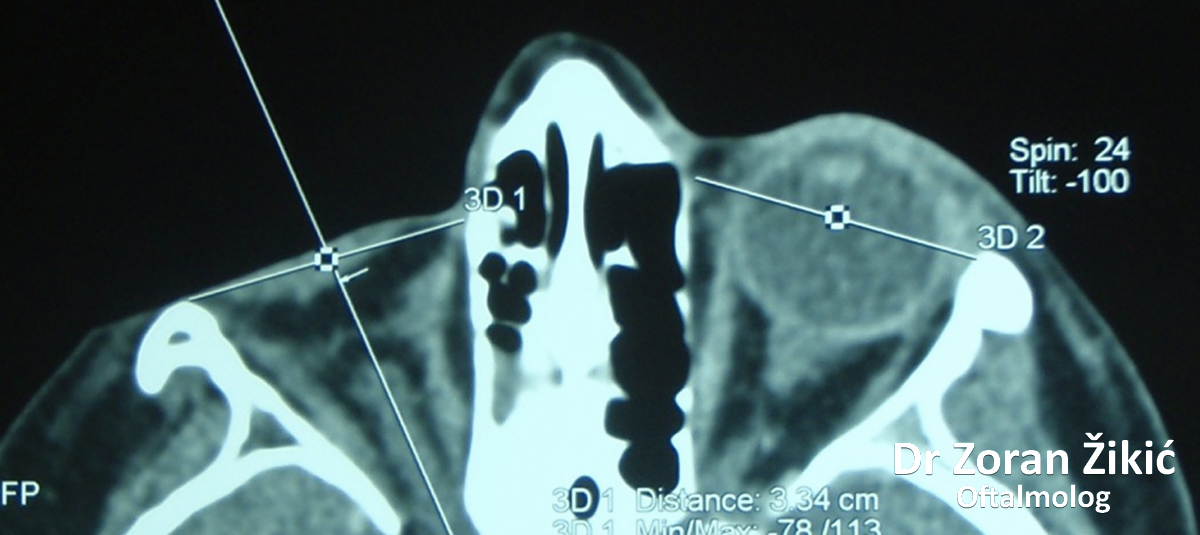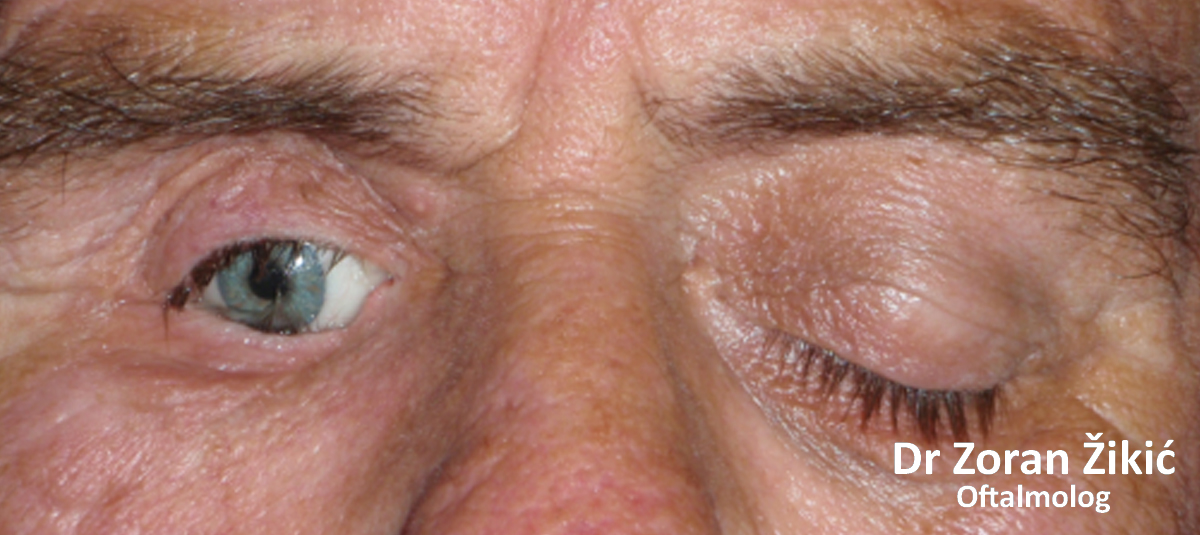[-]
Congenital under-development of the orbit is most frequently associated with under-development, or complete absence of the eye (congenital microphthalmos).
In such cases, it is important to start with combined prosthetic and surgical treatment as soon as possible, in order to stimulate the growth of bony and soft tissue structures of the orbit. In severe cases, failure to treat may lead to facial asymmetry.

 Congenital absence of the right eye, with consequential under-development of the orbit
Congenital absence of the right eye, with consequential under-development of the orbit 3D reconstruction of the bony structures of the face, derived from high-resolution CT (computerized tomography)
3D reconstruction of the bony structures of the face, derived from high-resolution CT (computerized tomography)In certain cases, due to trauma or disease of an eye, surgical removal is warranted, because of the threat to the other eye, life-threatening disease (intraocular tumor), or because of the negative effect on the quality of life due to disfigurement or chronic pain. When an eye is removed, an orbital implant is inserted into the orbit, to which the oculomotor muscles are attached. After approximately one month, an ocular prosthesis (artificial eye) is fitted. The orbital implant helps the prosthesis move synchronous with the other eye.
If an orbital implant was not inserted when the eye was surgically removed, with time, the volume deficit causes certain changes in the soft tissues of the orbit, which have a negative effect on the esthetic and functional aspects of prosthetic treatment.
 The appearance of the right orbit after removal of the eye without orbital implant placement. There is an obvious volume deficit in the orbit, in which the ocular prosthesis alone cannot compensate.
The appearance of the right orbit after removal of the eye without orbital implant placement. There is an obvious volume deficit in the orbit, in which the ocular prosthesis alone cannot compensate. The appearance of the right orbit after removal of the eye without orbital implant placement. There is an obvious volume deficit in the orbit, in which the ocular prosthesis alone cannot compensate.
The appearance of the right orbit after removal of the eye without orbital implant placement. There is an obvious volume deficit in the orbit, in which the ocular prosthesis alone cannot compensate.In such cases, it is necessary to replace the lost volume by a secondary orbital implant. Modern orbital implants are mostly spherical, made of different synthetic materials. The size (diameter) of the implant is calculated, prior to surgery, by a special algorithm.
If, due to scarring of the orbital soft tissues, the socket cannot accommodate a prosthesis, surgical reconstruction is indicated. The procedures performed, usually involve transplanting tissues from other parts of the body, such as oral mucosa or buttock fat.
 The right socket is contracted, thus there is not enough space for the ocular prosthesis, which has a tendency to fall out
The right socket is contracted, thus there is not enough space for the ocular prosthesis, which has a tendency to fall out The right socket is contracted, thus there is not enough space for the ocular prosthesis, which has a tendency to fall out
The right socket is contracted, thus there is not enough space for the ocular prosthesis, which has a tendency to fall out